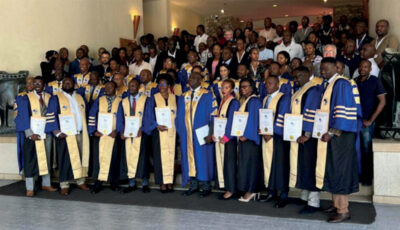Main content
The need for affordable medicines
Globally nearly two billion people do not have adequate access to essential medicines (EM).[1] Especially in low- and middle-income countries (LMICs), medicines are often unavailable or unaffordable, even though these countries have adopted a national essential medicines list as part of their healthcare policy. There can be several causes for the poor availability of EM in these countries, including the lack of production and distribution infrastructure and the difficulties in obtaining market authorisation of such products.[2,3] Even more important for access are the costs of medicinal products, in particular of high-priced biological medicines*. As LMICs have often not yet (fully) embraced universal health coverage, medicines must be paid out of pocket by patients, which makes these products unaffordable.[4,5] The development and marketing of lower priced biosimilars** can help in increasing the accessibility of EM in LMICs.
Experiences in the field of vaccines have shown that empowering manufacturers in LMICs to manufacture locally can lead to considerable price reductions and increased access. However, industrial development alone is not sufficient to ensure that local production can lead to improved access to EM. The success of technology transfer depends on a multitude of factors, including product factors, regulatory expertise at LMICs, and the ability to generate profit for local manufacturers.
The Utrecht centre for affordable biotherapeutics
In 2014, the World Health Organization (WHO) and Utrecht University in the Netherlands entered into a memo of understanding (MOU) which emphasises that technical collaboration will contribute to the shared goals of both organisations in promoting the wide availability of safe, effective, and affordable biotherapeutics, in particular in the public sector of developing countries. Based on this MOU, Utrecht University established the Utrecht Centre for Affordable Biotherapeutics for Public Health (UCAB) as a central hub to facilitate the development of safe and affordable biotherapeutics for LMICs in a sustainable way. UCAB was founded in 2015 and combines the scientific knowledge and expertise of Utrecht University with the global targets of the WHO. Within UCAB, all the appropriate development, clinical and regulatory expertise has been brought together. As a non-profit organisation, UCAB has a unique position to facilitate affordability and accessibility by enabling successful local production of biotherapeutics.
UCAB’s strategy is to initiate the formation of a business consortium with biotherapeutic manufacturers, consisting of a lead manufacturer, who will develop the biosimilar, and local manufacturers in LMICs for local production and/or distribution of the product. The business associates share the cost for the biosimilar development. The product development expertise of the lead manufacturer is shared with the consortium members in LMICs to build a dossier for marketing authorisation at the European Medicines Agency (EMA) and in their local regional territories. UCAB assists in the submission process to the EMA and to the local authorities by providing regulatory advice and assisting in the interactions with local authorities, but the lead manufacturer and local manufacturers are the market authorisation holders in their respective territories. This provides a sustainable situation after the product has been approved by local authorities. UCAB is the point of access for the formation of the business consortium, oversees the development activities, and facilitates the technology transfer to local manufacturers by providing advice, know-how, documentation and contractual services to manufacturers and regulatory authorities in LMICs.
Current UCAB projects
UCAB focusses on the development of biotherapeutics that have the greatest impact on public health in LMICs, which are preferably included in the WHO Model Essential Medicine List (EML)[6] or the Neglected Tropical Disease portfolio of the WHO. The projects are selected in close collaboration with the WHO.
Palivizumab project
The first project started by UCAB is the development of a palivizumab biosimilar for the prevention of respiratory syncytial virus (RSV) infections. RSV causes respiratory tract infections, most commonly in children under five years of age, and can be life threatening especially in premature infants.[7] Only one preventive treatment is available, palivizumab, which is an antiviral monoclonal antibody marketed under the brand name Synagis®. Palivizumab is indicated for children who are at high risk of severe RSV infections and is administered by intramuscular injection once every month during the RSV season (generally five months/year). This prophylactic treatment reduces the RSV-related hospitalisations in pre-term infants by about 80%. But palivizumab treatment is expensive (US$ 9,600/ season in the USA, €5,000/season in Europe), which makes this product unaffordable for use in children in LMICs, the areas where the virus is most prevalent and mortality rates are highest. Although the patent for Synagis® has expired, no biosimilar products are available yet. In collaboration with a biosimilar manufacturer, UCAB developed a collaborative model to facilitate development, manufacturing, validation, and registration of palivizumab in LMICs.
Bevacizumab project
Bevacizumab, a humanized monoclonal antibody that inhibits the vascular endothelial growth factor (VEGF) is approved for the treatment of several forms of cancer. VEGF has been proven to play a major role in the pathogenesis of neovascular age-related macular degeneration (nAMD), and bevacizumab is widely used off-label as an intravitreal injection for the treatment of this disorder.[8] Since 2013, bevacizumab has been on the EML of the WHO for the treatment of nAMD. Over ten years of clinical use has demonstrated bevacizumab to be an affordable and safe alternative for ranibizumab (brand name Lucentis®), the only licensed but expensive product for this indication. However, there is no pharmaceutical form of bevacizumab yet available on the market in prefilled syringes as is the case for Lucentis®. For the ophthalmic indication, bevacizumab, which is provided in vials for intravenous injection, needs to be prepared for intravitreal administration under aseptic conditions and kept sterile until use. This process carries the risk of contamination and puts the patient at risk of infections. Moreover, the bevacizumab vials are manufactured for intravenous injection, and the formulation (particle size and excipients) may not always be suitable for intravitreal injection. To prevent the safety risks associated with the dispensing of bevacizumab and to improve the ease of the injection procedures, UCAB is exploring the possibilities for developing a pharmaceutical presentation of a bevacizumab biosimilar in a prefilled syringe, designed and authorised for intravitreal injections in LMICS.
Insulin project
Even though insulin has been on the market for hundred years and has been on the WHO EML since 1977, availability and especially affordability in LMICs is still poor. For this project, UCAB is currently exploring different strategies. One of them is to acquire bulk insulin from one of the current insulin manufacturers for compounding and distribution by local manufacturers. Providing insulin to LMICs is only one element in the treatment of diabetes. Many other factors, such as blood sugar monitoring and patient education, play a significant role. Therefore, in this project it is important to work closely with international and national diabetes associations to make sure that the provision of insulin fits within the local diabetes treatment programmes.
Many organisations advocate for better access to medicines across the world. UCAB is one of the very few who strive to improve affordability and access to biologicals in LMICs by actively stimulating development and lower-cost production through international consortia of local manufacturers and tech transfer. We are open to exploring new project opportunities for biosimilar development that address urgent public health needs in LMICs.
For contact: Admin.UCAB@uu.nl
* Biological medicines (also called biologicals or biotherapeutics) are biotechnology-based medicines and are comprised of proteins such as hormones (growth hormones, insulins), enzymes that are naturally produced in the human body, monoclonal antibodies, sera, vaccines, allergens, and advanced technology products such as gene and cell therapy products. Like all medicines, biological medicines work by interacting with the body to produce a therapeutic outcome, but the mechanisms by which they do this may vary from product to product and across indications.
** A biosimilar is a biological medicine which is highly similar to an approved biological. Biosimilars can only be marketed once the patent of the original biological has expired.
References
- Chan M. Ten years in public health: 2007-2017 [Internet]. Geneva: World Health Organization; 2017. 152 p. Available from: https://apps.who.int/iris/bitstream/handle/10665/255355/9789241512442-eng.pdf?sequence=1
- Wirtz VJ, Kaplan WA, Kwan GF, et al. 2016. Access to medications for cardiovascular diseases in low- and middle-income countries. Circulation. 2016 May 24;133(21):2076-85
- Ozawa S, Shankar R, Leopold C, et al. Access to medicines through health systems in low- and middle-income countries. Health Policy Plan. 2019 Dec 1;34(Supplement_3):iii1-iii3. doi: 10.1093/heapol/czz119
- Wagner AK, Graves AJ, Reiss SK, et al. Access to care and medicines, burden of health care expenditures, and risk protection: results from the World Health Survey. Health Policy. 2011 May;100(2-3):151-8. doi: 10.1016/j.healthpol.2010.08.004
- Balarajan Y, Selvaraj S, Subramanian SV. Health care and equity in India. Lancet. 2011 Feb 5:377(9764):505-15. doi: 10.1016/S0140-6736(10)61894-6
- World Health Organization. World Health Organization model list of essential medicines: 21st list 2019 [Internet]. Geneva: World Health Organization; 2019. 65 p. Available from: https://apps.who.int/iris/bitstream/handle/10665/325771/WHO-MVP-EMP-IAU-2019.06-eng.pdf
- Scheltema NM, Gentile A, Lucion F, et al. Global respiratory syncytial virus-associated mortality in young children (RSV GOLD): a retrospective case series. Lancet Glob Health. 2017 Oct;5(10):2984-2991. doi: 10.1016/S2214-109X (17) 30344-3
- CATT Research Group, Martin DF, Maguire MG, et al. Ranibizumab and bevacizumab for neovascular age-related macular degeneration. N Engl J Med. 2011 May 19:364(20):1897-908. doi: 10.1056/NEJMoa1102673



















































